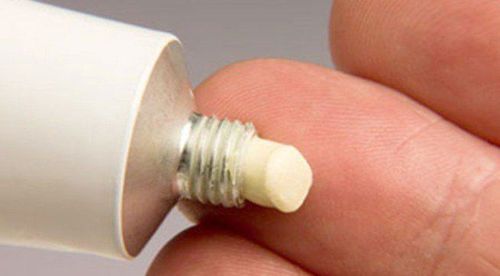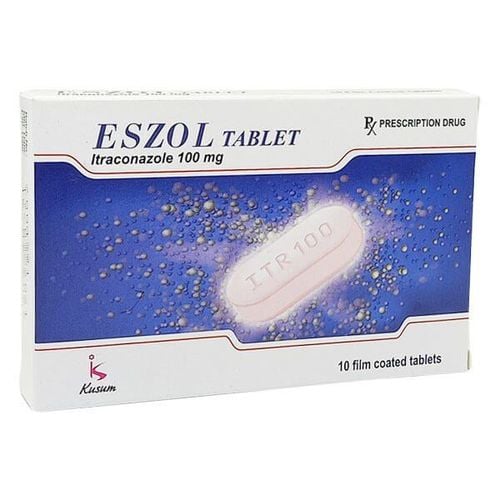This is an automatically translated article.
Pasvin drug is a drug of the group with a sterile mixture of Ceftazidime pentahydrate and Sodium carbonate, respectively 2g of Ceftazidime. The drug is preferred for the treatment of severe infections with susceptible bacteria. To ensure effective use, users need to follow the instructions of the doctor, and refer to the information content in the following article.
1. What is the use of Pasvin?
Pasvin is an anti-parasitic, anti-infective, anti-viral and anti-fungal drug.Pasvin is indicated for the treatment of diseases such as: Infections of the lower respiratory tract, infections of the skin and skin structures, urinary tract infections and both complicated or uncomplicated. Bone and joint infections, gynecological infections, abdominal infections...
2. How to use Pasvin
2.1. How to use Pasvin The drug Pasvin is administered intravenously, or by deep intramuscular injection: usually injected into the upper quadrant of the buttocks or the lateral part of the thigh. Instructions for preparation of solution for infusion:
Solution for intramuscular injection: Mix the drug (Ceftazidime 1g) in 3ml of distilled water for injection, or 0.5 % or 1% lidocaine hydrochloride solution for intravenous injection: Mix the drug (Ceftazidime 1g). ) in 10 ml of distilled water for injection, or 0.9% sodium chloride solution or 5% dextrose. Solution for injection, infusion: Mix the drug in solutions as well as in intravenous injection, but with a concentration of 10 to 20 mg per ml (1 to 2 g of drug in 100 ml of solvent). 2.2. Dosage of the drug Pasvin Adults:
The usual dose of Pasvin in adults is 1g, administered every 8 hours or 2g every 12 hours, by intravenous or deep intramuscular infusion. No dose adjustment is required for patients with impaired liver function. The recommended doses of Ceftazidime in patients with renal impairment are as follows: Creatinine clearance (ml per minute). Suggested dose: Frequency of use is 50-31 taking 1 gram, every 12 hours. 30 to 16 take 1 gram, every 24 hours. 15 to 6 take 500 mg, every 24 hours. Use in the elderly: The usual dose should not exceed 3g per day, especially in patients over 70 years of age. Administration: Injection, intravenous infusion, or deep intramuscular injection: usually injected into the upper corner of the buttocks, or the lateral part of the thigh.
Instructions for preparing solution for infusion: Solution for intramuscular injection: Mix the drug (Ceftazidime 1g) in 3ml of distilled water for injection, or 0.5% or 1% lilocaine hydrochloride solution. Intravenous solution: Dilute the drug (Ceftazidime 1g) in 10 ml of distilled water for injection, or 0.9% sodium chloride solution or 5% dextrose. Solution for infusion: Mix the drug in solutions similar to those used for intravenous injection but at a concentration of 10 to 20 mg per ml (1 to 2 g of drug in 100 ml of solvent).
Children: Dosage for pediatric patients, use as directed by the doctor or the following recommendations :
Newborns 0 to 4 weeks: 30 mg/kg IV every 12 hours . Children from 1 month to 12 years: Use 30 to 50 mg per kg intravenously up to 6g per day and every 8 hours. medication, or as directed by a doctor or pharmacist. Patients are not allowed to calculate, or apply and change the dose by themselves. Handling when missing a dose:
Usually drugs and pharmaceuticals can be taken within 1 to 2 hours compared to prescribed in the prescription. Unless there is a very strict rule about the time to take the medicine, it can be taken a few hours after forgetting. However, if the missed dose is too far from the time it should be taken, the patient should not take a double dose because it can be dangerous to the body. Patients need to strictly follow the doctor's instructions, or consult with the doctor before making a decision.
Treatment of Overdose:
Overdose: Overdose can lead to neurological sequelae including encephalopathy, convulsions, and coma. Serum concentrations of ceftazidime may be reduced by dialysis. When an overdose is detected, the patient should immediately seek medical attention for timely intervention.
3. Side effects of the drug Pasvin
Shock: shock can occur but is rare, so caution should be taken. If dystonia, abnormal taste, stridor, dizziness, tinnitus, diaphoresis occur, the drug should be discontinued or the treatment changed. Hypersensitivity: if rash or urticaria, erythema, pruritus, flushing, and maculopapular erythema occurs, angioedema or anaphylactoid reactions (including bronchospasm and/or hypotension) ), it is necessary to discontinue the drug and change the treatment. Skin: Rarely, erythema and Lyell's syndrome (toxic epidermal necrolysis) may occur, Stevens-Johnson syndrome. Central nervous system: causes headache or dizziness, paresthesias and decreased taste. There have been reports of neurological sequelae including tremor, myoclonus, convulsions and encephalopathy in patients with renal impairment receiving ceftazidime without adequate dose reduction. Renal: Rare cases of severe renal impairment, including acute renal failure, have been reported, therefore frequent monitoring of the patient is required. If any of these symptoms occur, the drug should be discontinued or the treatment changed. Hematologic: rarely, causing pancytopenia, leukopenia, agranulocytosis, hemolytic anemia, lymphocytosis, thrombocytosis, anemia, granulocytopenia and eosinophilia, neutropenia, thrombocytopenia. Occasionally causes transient increases in blood urea, nitrogen, or serum creatinine. Hepatic: rarely, occasionally causing jaundice, increased ALT, AST, AL-P, bilirubin, LDH, GGT, g-GTP.
5. Pasvin drug interactions
5.1. Other Drug Interactions It is important to remember that drug interactions with other drugs are often complicated by the effects of many of the ingredients present in the drug. Studies or recommendations usually only state common interactions with use. Therefore, do not arbitrarily apply information about Pasvin drug interactions if you are not a researcher, doctor or medical person.
5.2. Pasvin drug interactions with food, drink Consider using the drug together with alcohol, tobacco, alcoholic or fermented drinks. Factors that can change the composition of the drug. See details in the leaflet or consult your doctor or pharmacist for more details.
6. How to store Pasvin
Store in a cool, dry place, at a temperature not exceeding 30°C, in the original packaging and out of direct light. Because high temperature will change or can deform the ingredients of the drug.
Keep out of reach of children and pets.
Carefully read the instructions for storing the drug on the package and the Pasvin package insert. You should check the expiry date of the medicine before using it. When the medicine is not in use, or the medicine is damaged, it should be collected and disposed of according to the instructions of the manufacturer or the person in charge of medicine.
Hope the above sharing helps users better understand Pasvin as well as how to use it. If you have any problems during use, you can contact your doctor for in-depth advice.
Please dial HOTLINE for more information or register for an appointment HERE. Download MyVinmec app to make appointments faster and to manage your bookings easily.













